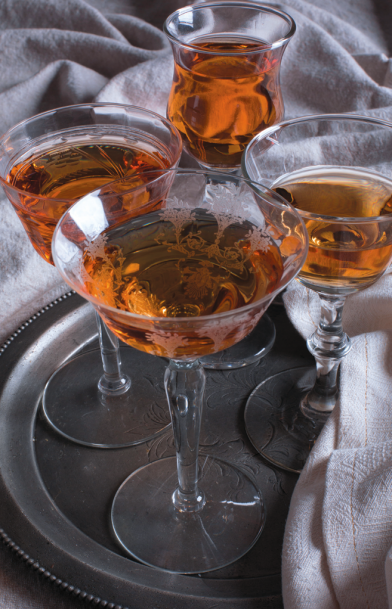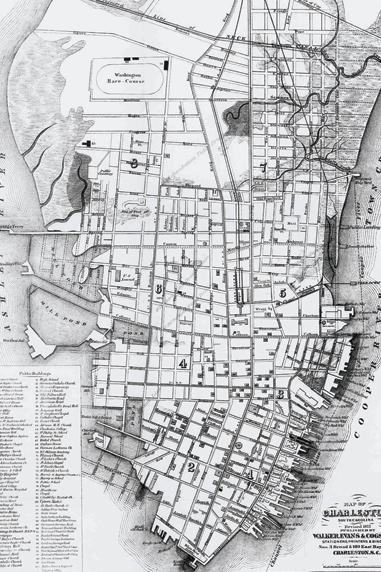Party Like It's 1791
Flitting through the pages of my old cookbooks, I came across long-forgotten dessert and beverage recipes from the southern region. I noticed that some desserts were suggested to be enjoyed with Madeira and realized I didn’t know much about the beverage. I considered Madeira to be the American equivalent of Sangria. I was so misinformed! But in my defense, vintage beverages of my era were Purple Jesus made in bathtubs and Boone’s Farm Strawberry Wine.
As I began to study the complexities of Madeira, it morphed easily into this Revolutionary era essay. George Washington sanctioned it, toasted it and imbibed Madeira (many times as history reveals) right here in Charleston. A rewarding libation for sure after President Washington arrived in Charleston on his white charger, Prescott, in 1791, nearing the halfway point of his 13-state celebratory tour.
After the American Revolutionary War victory, our new nation was able to import Madeira untaxed by British sanctions. During his stay in Charleston, Washington raised his glass and toasted with Madeira 15 or more times at a dinner held in his honor in the Long Room of Edward McCrady’s tavern. Yes indeed, the same resurrected restaurant of esteem and local pride that Chef Sean Brock has blessed us with for a decade. This snippet of history inspired me to hobble the cobble downtown to learn more about Madeira. First stop was Mc- Crady’s Tavern. I met with Noah Singerman, sommelier for Husk. We slid into a booth and Noah proceeded to explain the complexities of one of Charleston’s earliest cocktails, right where it began.
A pour of Bual Madeira accompanied a lush foie gras with toast points, not a bad way to start a lesson. Noah explained that Madeira comes from its namesake—a volcanic, Portuguese island. Historically, the wines themselves were created by an accidental export process. The wine was fortified with alcohol to survive its lengthy trip at sea. Tropical conditions heated and cooled the wine en route and the ship’s lull back and forth developed a new spirit on the way. Noah explains, “Oxidation, heat, motion, alcohol—Madeira. Wine that came from Madeira was so exceptional, it ended up leaving their ports and arriving at ours better than when it left.” Basically, shaken not stirred. Madeira has indefinite shelf life even after being uncorked. It is considered to be a fine sipping or dessert wine.
The white grapes that create Madeira are; Sercial, Verdelho, Bual and Malmsey. As I listen to Noah, I sample a pour of Boston Bual from the Historic Series Madeira by Rare Wine Company. Bual is a medium-sweet Madeira, exceptionally warm and full-bodied. I immediately noted the chocolate, cherry and raisin notes. I questioned its color, a clear claret. Noah explained. “The reason Madeira, which is made from white grapes, looks a brick red/brownish color is because of oxidation. Think of an apple, half eaten, left on the counter for a few hours. What color is the part that was exposed to the air?”
Noah left us to Simon Stillwell who gave us a short historical tour of McCrady’s Long Room upstairs where George Washington enjoyed a 30-course dinner. The room structure is the same today as it was more than 200 years ago. Imagination can easily conjure that night in 1791. Urns perhaps dripped with fragrant jasmine and magnolia, pots of palms lined the walls, glasses tinkled and reflected the glow from candles in the weighty hanging chandeliers, cannons outside the alley, manned by the Charleston Artillery, were fired each time a toast was made. But today—all is quiet in the Long Room. Sean Brock shuffles some papers, looks up and grins at us from the head of the huge table, a seat that I am sure the McCrady of 1791 would have been proud to have given him.
I left McCrady’s for the short jaunt to Husk Restaurant to enjoy fare that may very well have been offered during this era. Fresh, local, sustainable ingredients—the epitome of quality and flavor reside here. I started the meal with Madeira, the Savannah Verdelho Madeira and Charleston Sercial. Exquisite. I enjoyed a round of wood-fired White Stone oysters before my entrée of cornmeal fried catfish, Carolina Gold rice, fish stew with okra and Dixie Lee peas, preserved tomato and benne.
Dessert was lemon pound cake with raspberry sorbet and whipped honey crème anglaise. And to cap off the Madeira adventure—a glass of vintage Madeira, D’Oliveiras Malvasia, 1986. I’ve learned a lot about Madeira and its place in Charleston history today. Outside of Husk, the rain-drenched cobblestone roads glisten in the gas lights of Queen Street, punctuating a perfect Charleston evening.
There are more vintage Charleston beverages to explore: the Charleston Light Dragoon’s punch, which consists of California brandy, Barbados rum, peach brandy, black tea, lemon and raw sugar from a 1783 recipe discovered in the archives of the Preservation Society of Charleston. And then there is the dessert beverage of syllabub. Alas, another day. Now, where is my powdered wig?






